Traditional bathrooms represent the pinnacle of timeless design, blending classic elegance with enduring functionality. Rooted in historical periods like Victorian, Edwardian, and Georgian eras, these sophisticated spaces emphasize quality craftsmanship, natural materials, and refined details. From ornate Victorian grandeur to clean Edwardian simplicity, traditional bathroom designs create sanctuaries that feel both luxurious and welcoming. Whether you're renovating a period home or adding classic charm to a contemporary space, traditional elements like clawfoot tubs, marble surfaces, brass fixtures, and furniture-style cabinetry transform ordinary bathrooms into extraordinary retreats that stand the test of time.
1. Traditional Victorian Clawfoot Bathroom
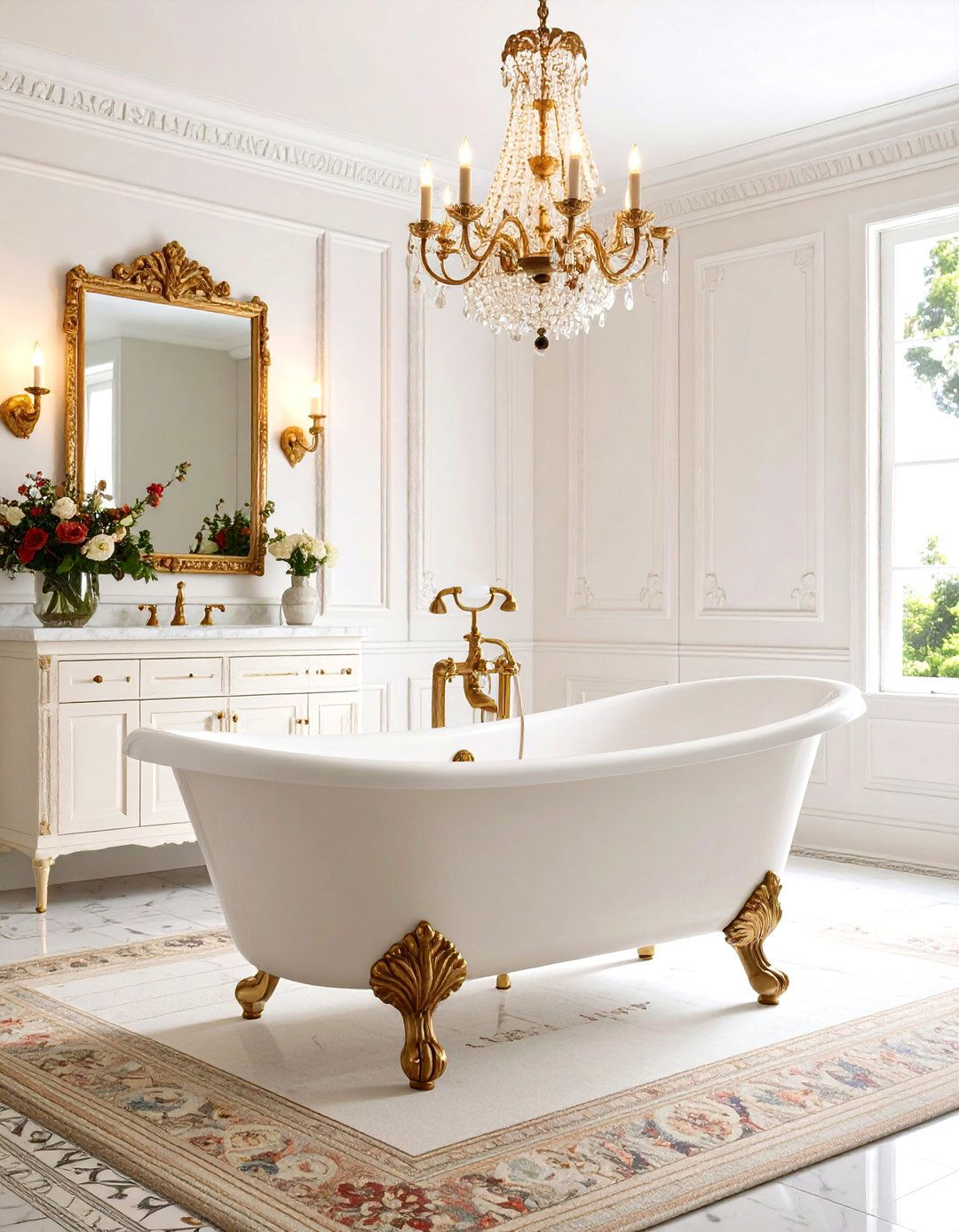
Victorian elegance comes alive through an ornate cast-iron clawfoot tub positioned as the room's stunning centerpiece. This traditional bathroom design features rich, dark wood wainscoting paired with floral wallpaper above, creating authentic period charm. Brass fixtures including exposed plumbing, vintage-style faucets, and ornate towel rails complement the tub's eagle claw feet. A marble or ceramic pedestal sink with intricate detailing provides functional beauty, while a high-tank toilet with pull chain maintains historical accuracy. Decorative elements include an elaborate crystal chandelier, ornate gilt mirrors, and patterned encaustic floor tiles in deep jewel tones. Heavy drapery at windows and plush Persian-style rugs complete this luxurious Victorian atmosphere that celebrates opulent craftsmanship.
2. Traditional Edwardian White Bathroom
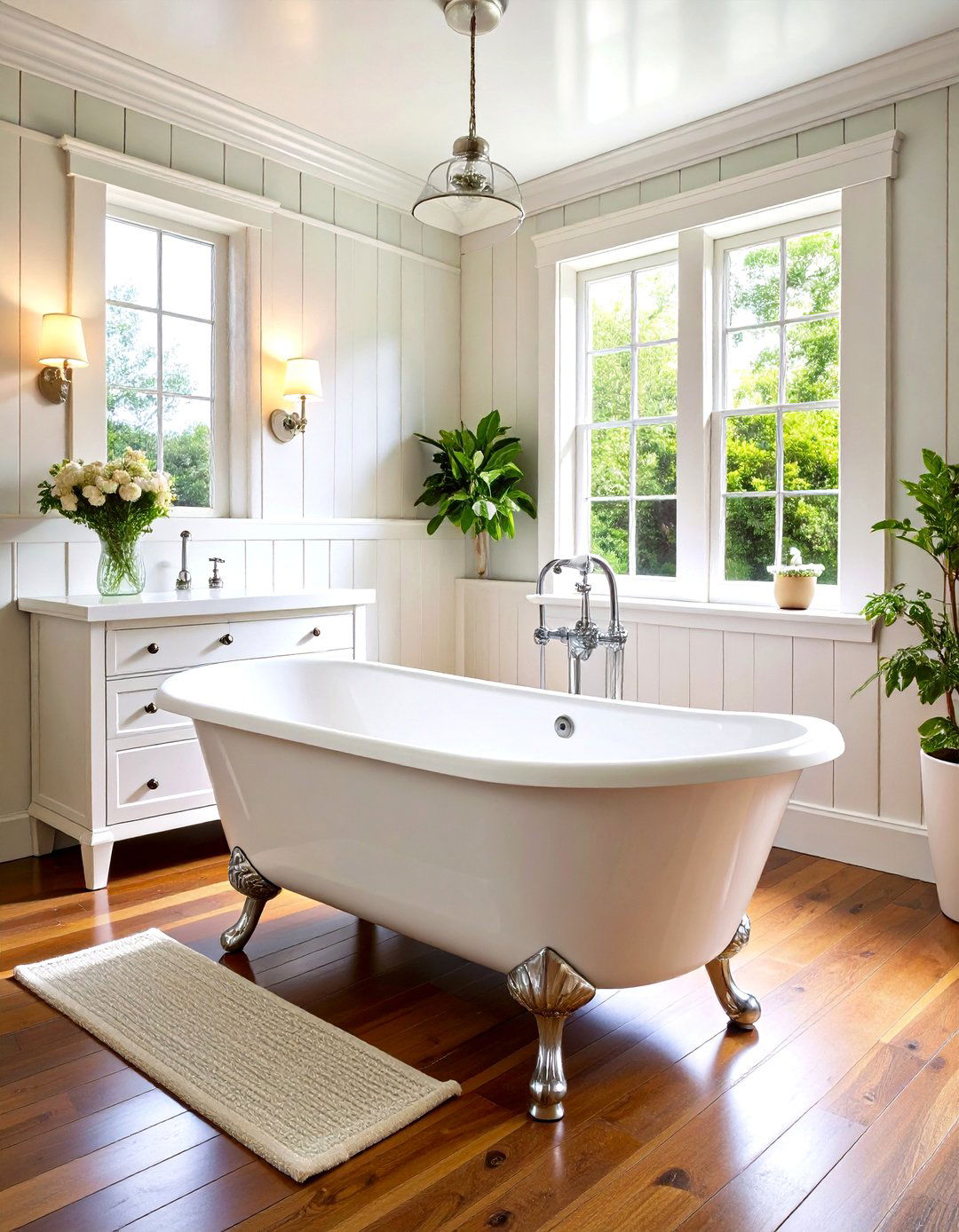
Clean lines and hygiene-focused design define this traditional Edwardian bathroom featuring predominantly white fixtures and surfaces. Crisp white subway tiles cover walls from floor to ceiling, creating a fresh, sanitary appearance that was revolutionary for its time. A white porcelain clawfoot tub with simplified feet sits alongside a streamlined pedestal sink with minimal ornamentation. Polished chrome or nickel fixtures replace ornate brass for a more refined aesthetic. White painted wood paneling extends halfway up walls, topped with simple crown molding. Large windows with frosted glass panels maximize natural light while maintaining privacy. A white-painted wood medicine cabinet with beveled mirror and simple white ceramic accessories emphasize the period's emphasis on cleanliness and simplicity over excessive decoration.
3. Traditional French Country Bathroom
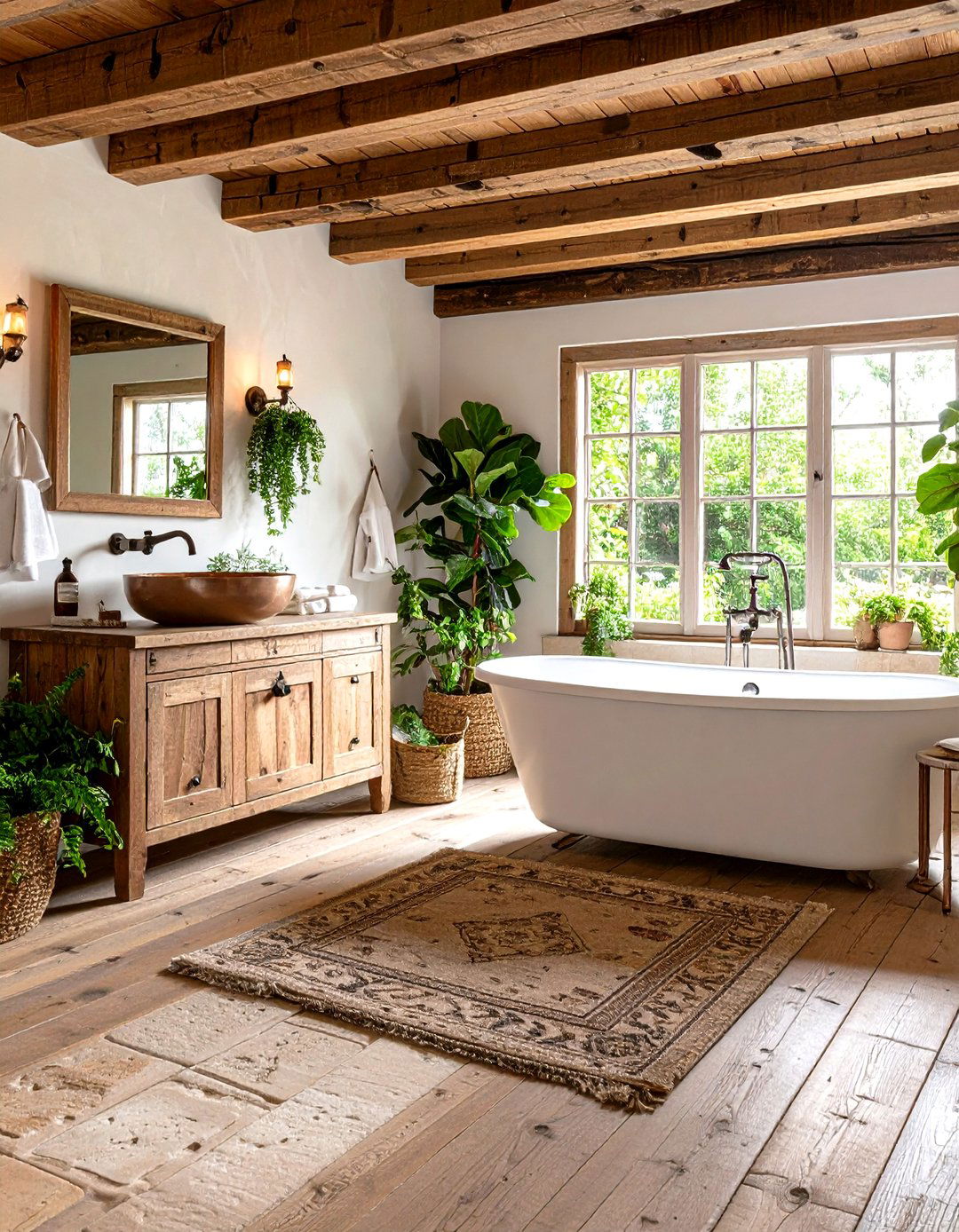
Rustic elegance meets refined comfort in this traditional French country bathroom featuring natural limestone floors and weathered oak vanity furniture. A copper or stone vessel sink sits atop a repurposed antique French commode, creating authentic provincial charm. Exposed wooden ceiling beams complement distressed painted walls in soft sage green or creamy white. A vintage clawfoot tub painted in muted pastels sits beneath a rustic wooden ladder repurposed as a towel rack. Wrought iron fixtures include wall sconces with fabric shades and decorative towel bars. Natural materials dominate through travertine tiles, reclaimed wood shelving, and woven baskets for storage. Fresh lavender, vintage apothecary jars, and antique French mirrors complete this romantic countryside retreat that balances sophistication with rustic warmth.
4. Traditional Georgian Marble Bathroom
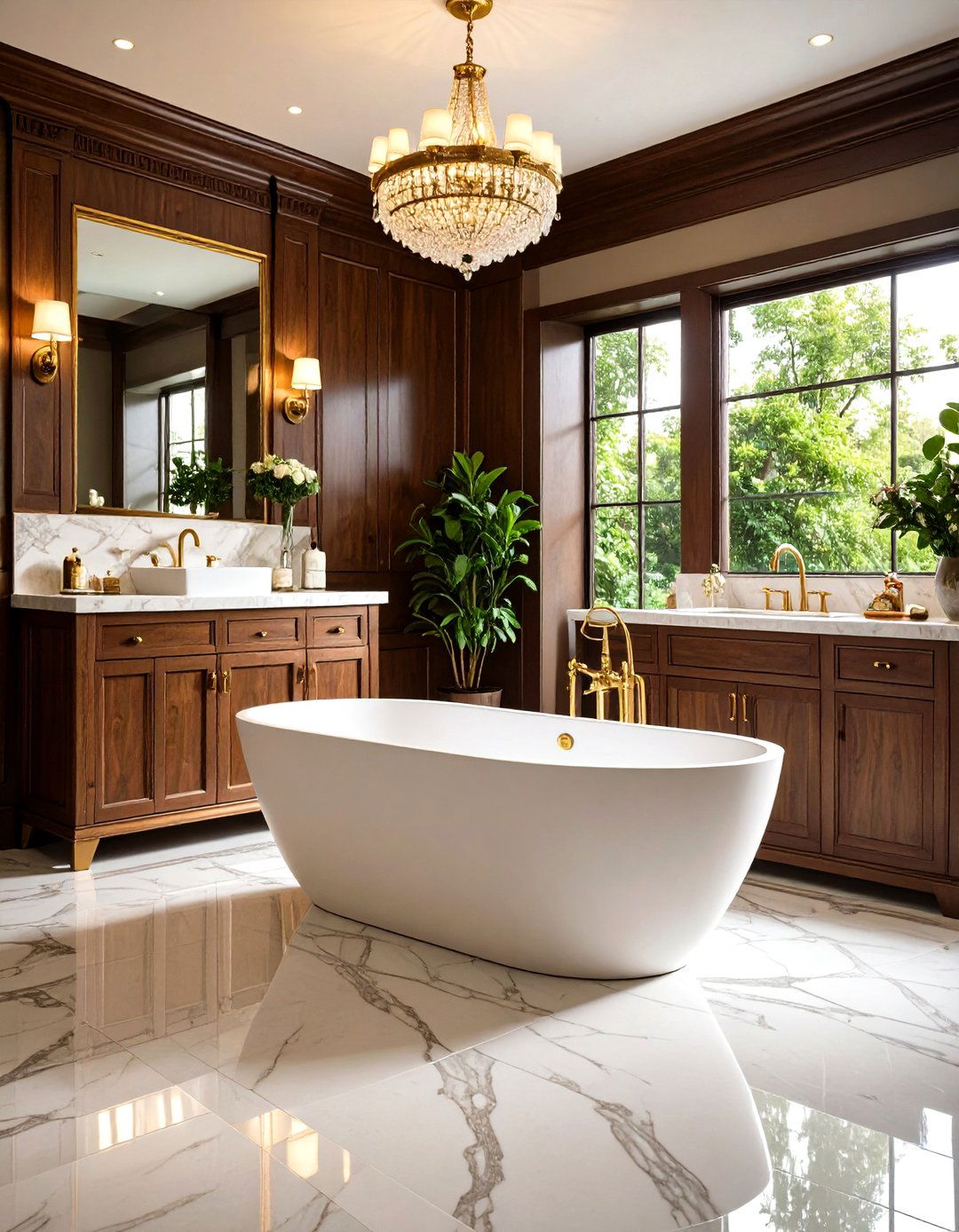
Refined proportions and classical elegance characterize this traditional Georgian bathroom featuring luxurious Carrara marble surfaces throughout. A marble-clad freestanding tub serves as the focal point, surrounded by matching marble flooring in large-format tiles with minimal grout lines. Furniture-style cabinetry crafted from mahogany or walnut features raised panel doors and classical proportions typical of the Georgian period. Polished brass fixtures including widespread faucets and wall-mounted sconces provide warm metallic accents against the cool marble. Architectural details include fluted columns, dentil molding, and symmetrical design elements. A marble console sink with turned legs exemplifies the period's furniture-inspired approach to bathroom fixtures. Soft blue-gray paint colors and crystal lighting fixtures complete this sophisticated space that epitomizes Georgian refinement and classical proportions.
5. Traditional Arts and Crafts Bathroom

Handcrafted beauty and natural materials define this traditional Arts and Crafts bathroom featuring rich wooden vanities with visible joinery and hardware. Quarter-sawn oak cabinetry displays the wood's natural grain through oil finishes, while ceramic tile work includes hand-painted floral motifs and earth-toned glazes. A built-in wooden bathtub surround incorporates storage cubbies and display shelves for handmade pottery and textiles. Copper fixtures including vessel sinks and exposed plumbing celebrate the metalworker's craft. Stone flooring in natural slate or limestone provides durability and organic texture. Stained glass windows filter light through nature-inspired patterns, while built-in wooden benches and open shelving showcase the period's emphasis on functional beauty. Handwoven textiles, pottery vessels, and plants in ceramic planters complete this authentic craftsman aesthetic.
6. Traditional Carrara Marble Bathroom
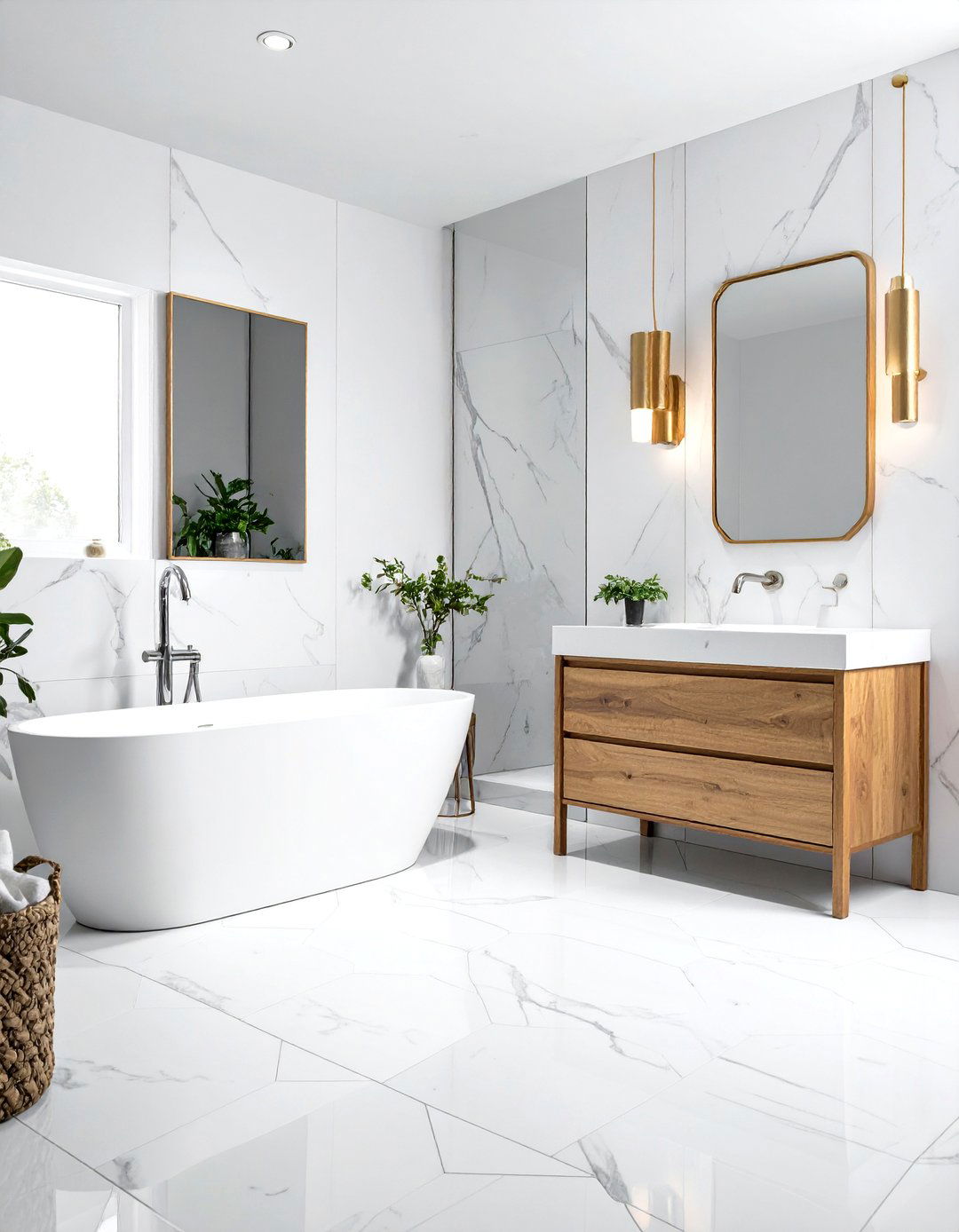
Timeless sophistication emanates from this traditional bathroom featuring classic white Carrara marble in subway tile, hexagon floor patterns, and vanity countertops. The marble's distinctive gray veining creates natural artwork throughout the space, from floor-to-ceiling shower walls to elegant wainscoting. A furniture-style vanity in warm wood tones provides beautiful contrast against the cool marble surfaces. Polished nickel fixtures including widespread faucets and vintage-style lighting maintain the classic aesthetic while offering modern functionality. Traditional elements include a marble-topped console table, ornate mirrors with decorative frames, and crystal light fixtures. White painted millwork includes crown molding, baseboards, and window trim that frame the marble surfaces. This refined design celebrates marble's enduring appeal while creating a serene, spa-like atmosphere that feels both luxurious and calming.
7. Traditional Black and White Bathroom
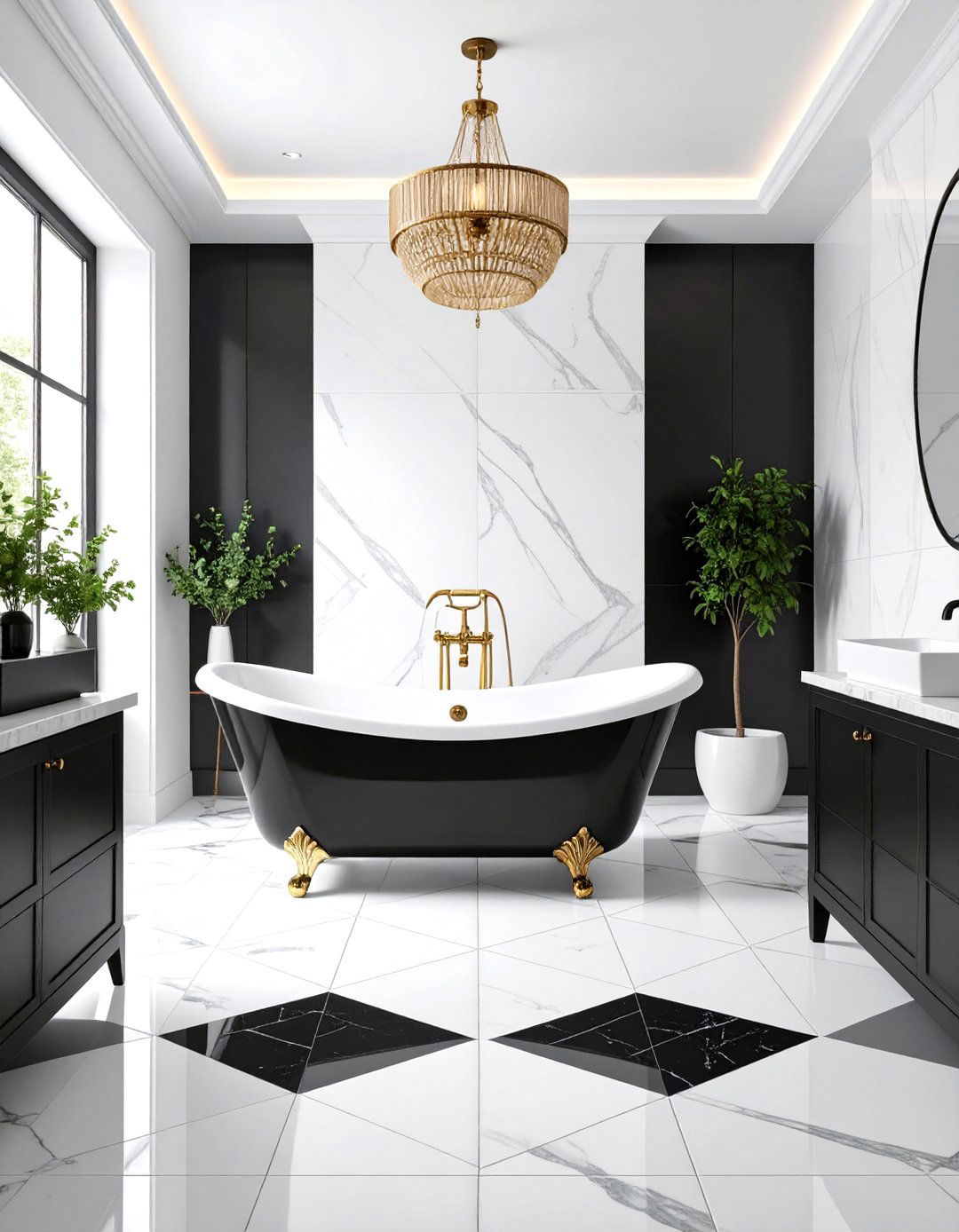
Classic contrast creates drama in this traditional black and white bathroom featuring checkered marble floors and crisp white subway tiles. A white clawfoot tub with black exterior paint creates a striking focal point, while black vanity cabinetry with white marble countertops provides elegant storage. Traditional fixtures in polished chrome or brushed nickel maintain the monochromatic scheme while adding metallic sophistication. Black and white patterned wallpaper above white wainscoting introduces traditional motifs without overwhelming the space. A vintage-style pedestal sink in white porcelain complements the high-contrast theme. Crystal chandelier lighting and ornate mirrors with black frames complete the look. This timeless color combination works beautifully in both small powder rooms and larger master bathrooms, creating sophisticated spaces that never go out of style through their classic appeal.
8. Traditional Brass Fixture Bathroom
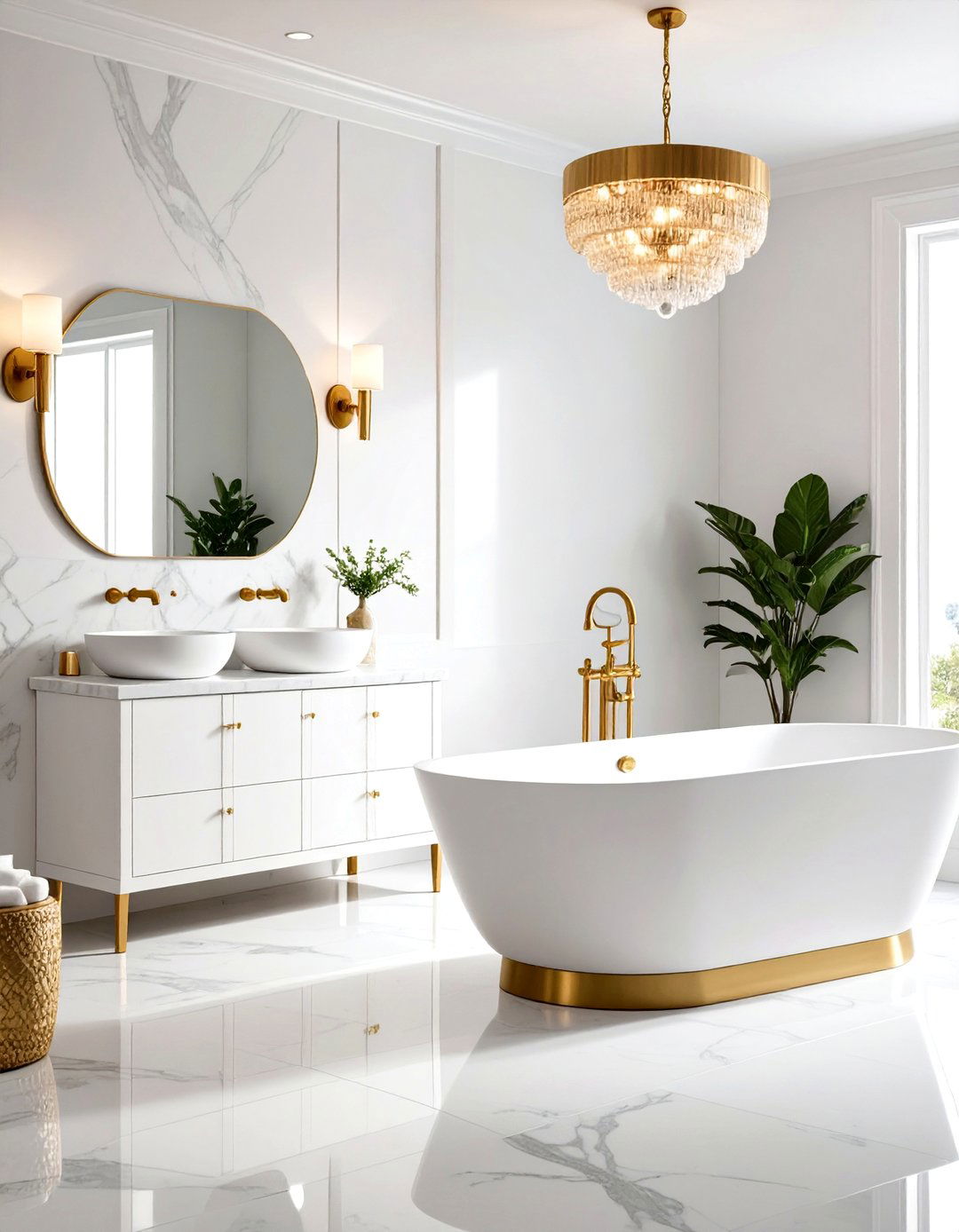
Warm metallic tones define this traditional bathroom featuring aged brass fixtures throughout, from faucets and shower heads to lighting and hardware. A white marble vanity provides the perfect backdrop for brass cabinet pulls and widespread faucets that develop beautiful patina over time. Traditional subway tiles in white or cream complement the warm brass tones, while hexagon marble floors add textural interest. A clawfoot tub with brass faucets and handheld shower attachment creates a luxurious bathing experience. Brass sconces with white glass shades provide ambient lighting, while an ornate brass mirror frame adds decorative appeal. Natural materials including wood vanity bases and stone flooring balance the metallic elements. This cohesive approach to fixture selection creates warmth and sophistication while honoring traditional design principles that celebrate quality metalwork and craftsmanship.
9. Traditional Wainscoting Bathroom
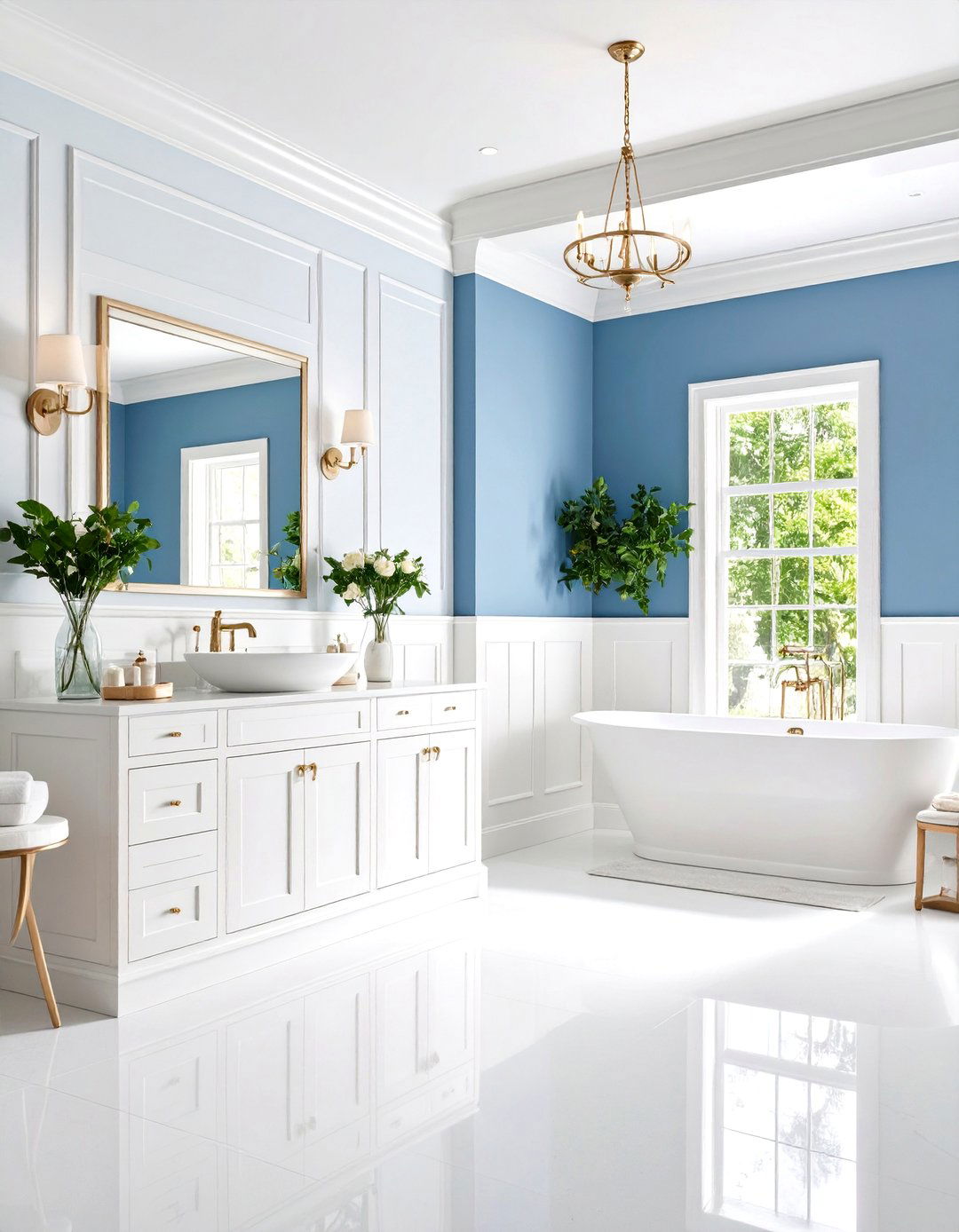
Architectural character shines in this traditional bathroom featuring floor-to-ceiling paneled wainscoting in crisp white paint. Raised panel detailing creates visual interest and texture while protecting walls from moisture in the lower portion of the room. Above the chair rail, soft blue or green paint colors create a calming atmosphere reminiscent of traditional color palettes. A pedestal sink with traditional proportions fits seamlessly within the paneled environment, while a clawfoot tub provides classic bathing luxury. Traditional fixtures in polished chrome or brushed nickel complement the painted millwork. Crown molding, baseboards, and window trim complete the architectural detailing. A vintage-style medicine cabinet recessed into the wainscoting maintains the clean lines. This approach works particularly well in smaller bathrooms where the paneling adds perceived height and architectural interest without overwhelming the space.
10. Traditional Pedestal Sink Bathroom

Elegant simplicity defines this traditional bathroom centered around a classic white porcelain pedestal sink with graceful curves and timeless proportions. The sink's sculptural base creates visual lightness while providing essential functionality in smaller spaces. Traditional subway tiles in white or soft colors provide a clean backdrop, while marble or ceramic flooring adds durability and beauty. A vintage-style mirror with decorative frame complements the sink's classical proportions. Traditional lighting includes brass or chrome sconces positioned at appropriate heights for grooming tasks. A clawfoot tub or shower with vintage-style fixtures maintains the classical theme throughout the space. Storage solutions include built-in medicine cabinets, decorative shelving, and vintage-inspired accessories. This approach celebrates the pedestal sink as both functional necessity and beautiful focal point, creating bathrooms that feel open, airy, and timelessly elegant through careful attention to proportion and detail.
11. Traditional Subway Tile Bathroom
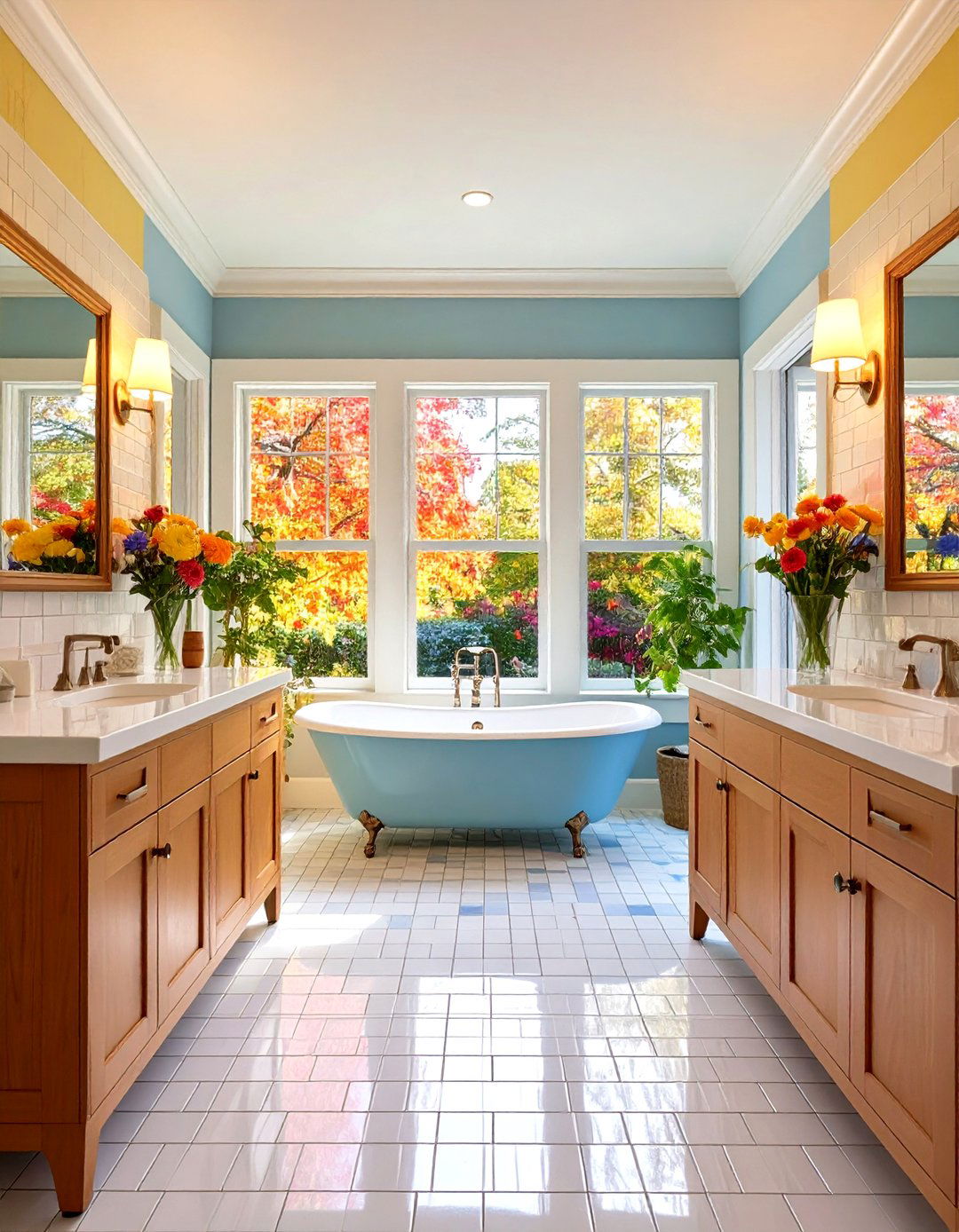
Classic white subway tiles create the foundation for this traditional bathroom featuring timeless 3x6 inch rectangular tiles in running bond pattern. The versatile tiles cover walls from floor to ceiling or serve as wainscoting topped with decorative border tiles. Traditional fixtures including pedestal sinks, clawfoot tubs, and vintage-style faucets complement the clean tile backdrop. Grout lines in white or light gray maintain the classic appearance while contrasting grout can add subtle definition. Marble or ceramic flooring in hexagon, checkerboard, or basketweave patterns provides textural contrast to the wall tiles. Traditional elements include ornate mirrors, crystal lighting, and brass or chrome fixtures. The subway tile's rectangular format works beautifully with traditional proportions and color schemes. This enduring tile choice provides a neutral foundation that allows other traditional elements to shine while maintaining the clean, sanitary appearance that made subway tiles popular in early 20th-century bathrooms.
12. Traditional Freestanding Tub Bathroom
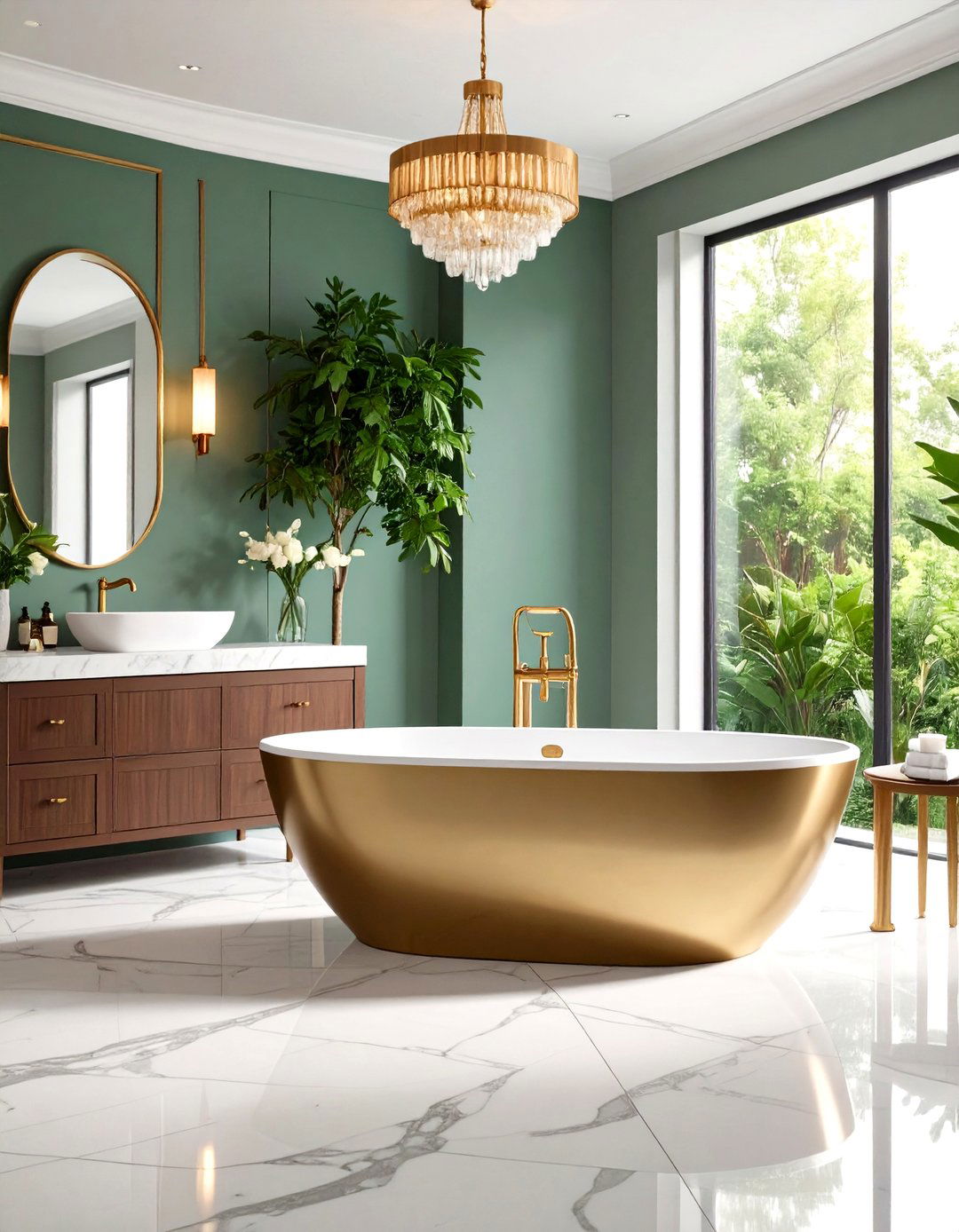
Luxurious bathing takes center stage in this traditional bathroom featuring an elegant freestanding tub positioned as the room's dramatic focal point. Cast iron, copper, or modern acrylic tubs in classic silhouettes provide both beauty and function. The tub's placement beneath a window or centered in the room creates a spa-like atmosphere perfect for relaxation. Traditional elements include marble or stone flooring that can handle water splashing, while furniture-style vanities provide storage and surface space. Brass or brushed nickel fixtures including floor-mounted tub fillers add metallic warmth. Traditional wainscoting or tile work protects walls while adding architectural interest. A vintage-style chandelier or pendant lighting creates ambiance for evening soaks. Built-in niches or freestanding furniture provide storage for towels and bath essentials. This approach transforms the humble bathroom into a luxurious retreat that celebrates the art of bathing through traditional elegance and comfort.
13. Traditional Hexagon Tile Bathroom

Geometric sophistication defines this traditional bathroom featuring classic hexagon tiles in marble, ceramic, or porcelain materials. The six-sided tiles create timeless patterns that work beautifully on floors, walls, or as accent areas. White or black hexagon tiles provide classic appeal, while colored versions in soft blues, greens, or grays add personality. Traditional fixtures including clawfoot tubs, pedestal sinks, and vintage-style lighting complement the geometric flooring. Border tiles in contrasting colors or materials can define spaces or add decorative interest. The hexagon pattern's mathematical precision appeals to traditional design sensibilities while providing excellent durability. Furniture-style vanities and marble countertops balance the geometric flooring with organic materials. This tile choice works particularly well in powder rooms, shower floors, or as accent walls where its pattern creates visual interest without overwhelming the space through traditional proportions and classic color combinations.
14. Traditional Shaker Style Bathroom
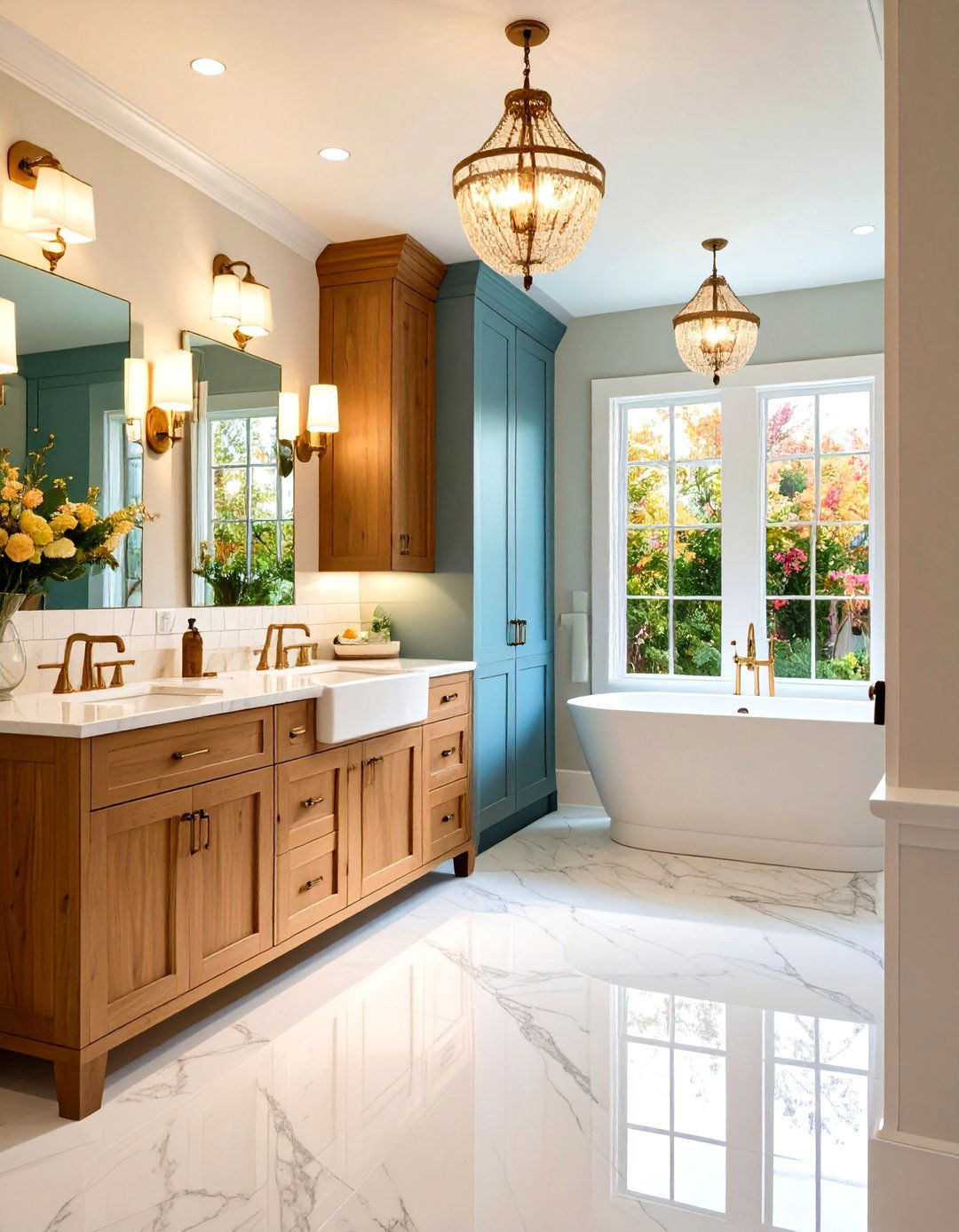
Clean lines and functional beauty characterize this traditional Shaker-style bathroom featuring simple raised panel cabinetry in natural wood or painted finishes. The Shaker aesthetic emphasizes quality craftsmanship without unnecessary ornamentation, creating timeless appeal through honest materials and proportions. Traditional elements include marble or wood countertops, subway tile backsplashes, and classic hardware in brass or iron finishes. A farmhouse-style sink or traditional undermount basin maintains the utilitarian aesthetic. Simple lighting fixtures and unadorned mirrors complement the clean cabinetry lines. Natural materials including wood floors or ceramic tiles provide durability and beauty. The Shaker philosophy of "beauty rests on utility" creates bathrooms that are both beautiful and highly functional. Storage solutions include carefully designed drawers, cabinets, and built-in elements that maximize space efficiency. This approach celebrates traditional American craftsmanship while creating serene, uncluttered spaces that feel both timeless and contemporary.
15. Traditional Checkerboard Floor Bathroom

Bold geometric pattern creates timeless appeal in this traditional bathroom featuring classic black and white checkerboard flooring in marble, ceramic, or vinyl materials. The dramatic floor pattern serves as the room's foundation, requiring careful balance with other elements to avoid overwhelming the space. Traditional fixtures including white pedestal sinks, clawfoot tubs, and classic lighting provide elegant contrast to the busy flooring. White or neutral wall colors allow the floor pattern to take center stage while maintaining visual calm. Traditional elements include ornate mirrors, crystal chandeliers, and brass or chrome fixtures that add metallic sophistication. The checkerboard pattern works particularly well in larger bathrooms where the scale can accommodate the bold design. Built-in storage, decorative molding, and quality materials ensure the dramatic flooring enhances rather than dominates the traditional aesthetic. This classic pattern choice creates memorable bathrooms that celebrate traditional design's ability to be both sophisticated and playful.
16. Traditional Copper Tub Bathroom
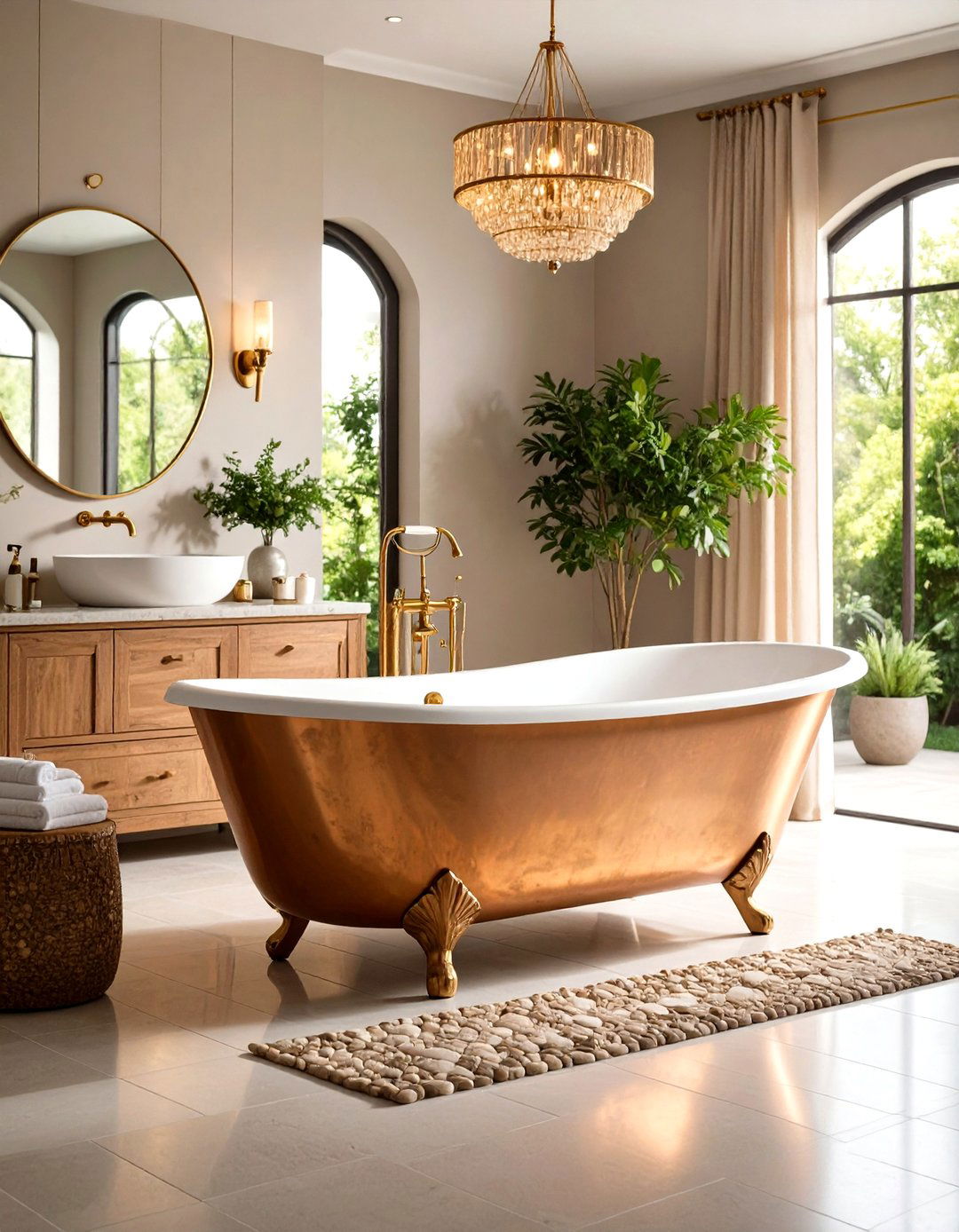
Rustic luxury defines this traditional bathroom featuring a stunning copper clawfoot or freestanding tub that serves as both functional fixture and artistic centerpiece. The copper's warm metallic tones develop beautiful patina over time, creating living finishes that improve with age. Traditional elements include stone or tile flooring that complements the copper's earthy appeal, while furniture-style vanities in wood tones provide storage and contrast. Brass fixtures including faucets, lighting, and hardware harmonize with the copper tub's warm metallic finish. Natural materials like reclaimed wood, stone surfaces, and woven textiles balance the metallic elements. Traditional color palettes in earth tones, sage greens, or creamy whites complement copper's natural beauty. The tub's artisanal quality celebrates traditional craftsmanship while providing modern comfort. This approach creates bathrooms that feel both rustic and refined, honoring traditional materials while offering contemporary luxury through exceptional design and quality construction.
17. Traditional Console Sink Bathroom
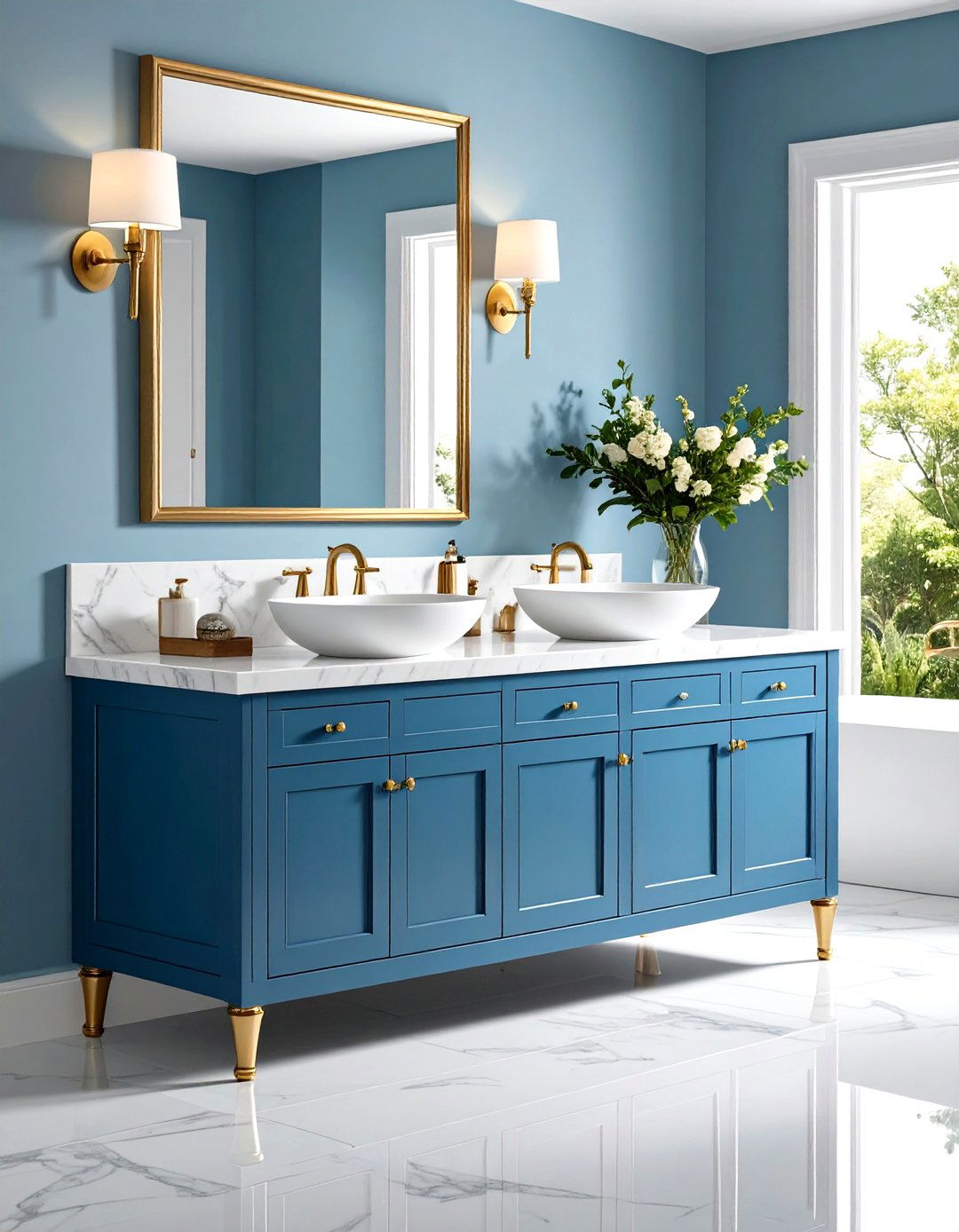
Furniture-inspired design takes center stage in this traditional bathroom featuring an elegant console sink with turned legs and marble or wooden top. The open structure creates visual lightness while providing essential counter space and storage underneath. Traditional elements include the console's classical proportions, decorative legs, and quality materials that reference antique furniture pieces. A marble or stone top provides durability and luxury, while the open base allows for decorative storage baskets or towels. Traditional fixtures including widespread faucets, ornate mirrors, and crystal lighting complement the furniture aesthetic. The console design works particularly well in powder rooms or master bathrooms where it creates an elegant focal point. Traditional flooring in marble, stone, or hardwood complements the console's furniture-like appearance. This approach transforms the utilitarian sink into a beautiful piece of functional furniture that celebrates traditional craftsmanship while providing modern convenience and style.
18. Traditional English Country Bathroom
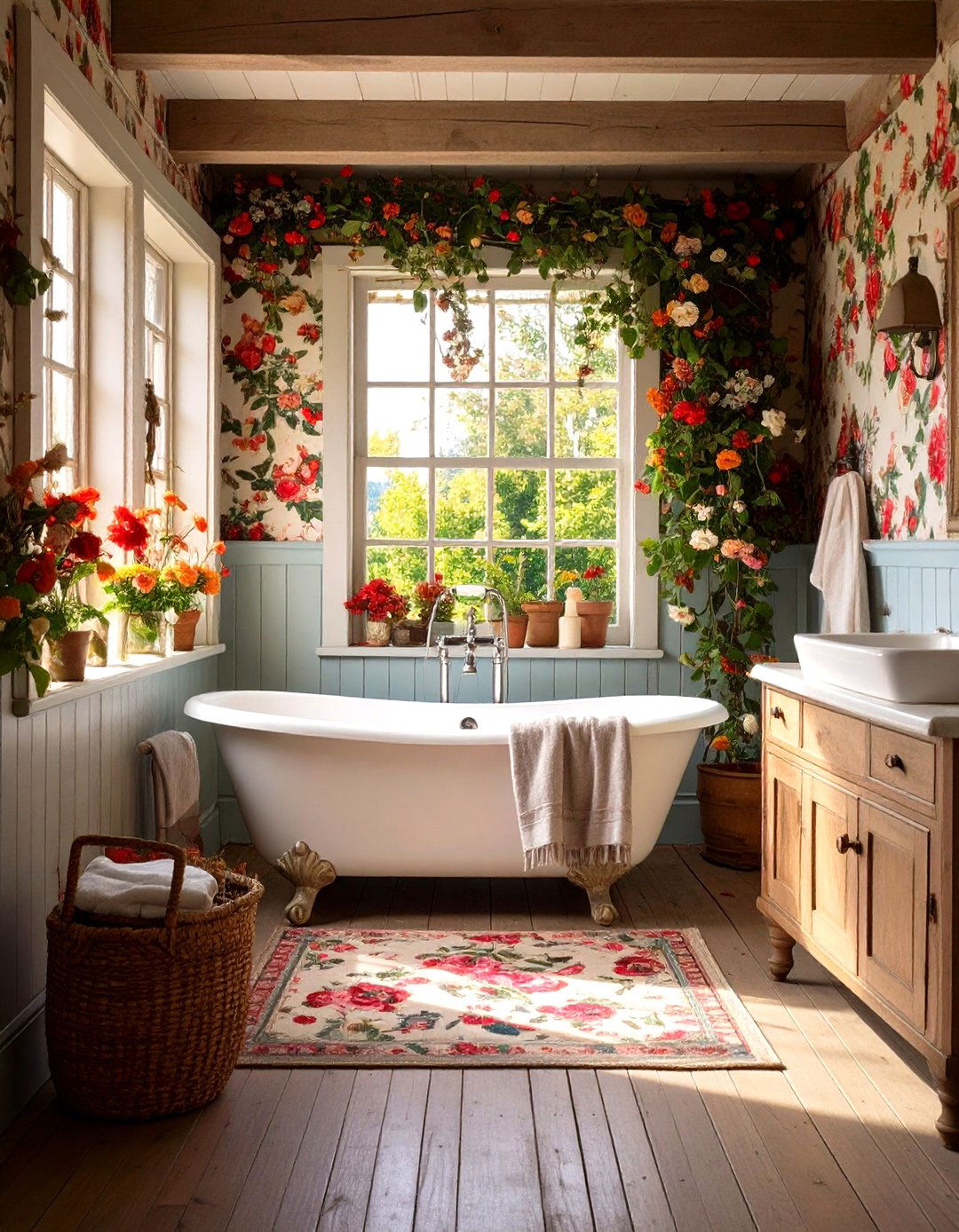
Cozy elegance defines this traditional English country bathroom featuring floral wallpapers, painted wood furniture, and vintage accessories that create cottage charm. Traditional elements include a roll-top bath positioned beneath mullioned windows, while painted vanities in soft colors provide storage and character. Floral or toile wallpapers above traditional wainscoting add pattern and color reminiscent of English gardens. Traditional fixtures in brass or painted finishes complement the cottage aesthetic. Natural materials including flagstone floors, wooden beams, and wicker storage maintain the rural connection. Traditional elements include vintage mirrors, ceramic accessories, and botanical prints that celebrate the garden connection. Soft lighting through fabric lampshades and natural window light creates a cozy atmosphere perfect for relaxation. This approach creates bathrooms that feel like romantic retreats, celebrating traditional English design's ability to combine comfort with elegance through careful attention to pattern, color, and natural materials.
19. Traditional Marble Vanity Bathroom

Sophisticated materials take center stage in this traditional bathroom featuring a stunning marble vanity top with integrated or undermount sinks. The marble's natural veining creates artistic beauty while providing durable functionality. Traditional cabinetry in furniture-style designs supports the marble surface, featuring raised panels, decorative hardware, and quality construction. Traditional elements include marble flooring, subway tile backsplashes, and coordinating marble accessories. The vanity's design references traditional furniture proportions while accommodating modern plumbing and storage needs. Traditional fixtures in brass, chrome, or brushed nickel complement the marble's elegant appearance. Decorative mirrors, crystal lighting, and quality hardware complete the luxurious aesthetic. The marble's timeless appeal ensures the bathroom will remain beautiful for decades. This approach celebrates traditional materials' enduring beauty while providing contemporary functionality through thoughtful design and expert craftsmanship that honors both form and function.
20. Traditional Chandelier Bathroom
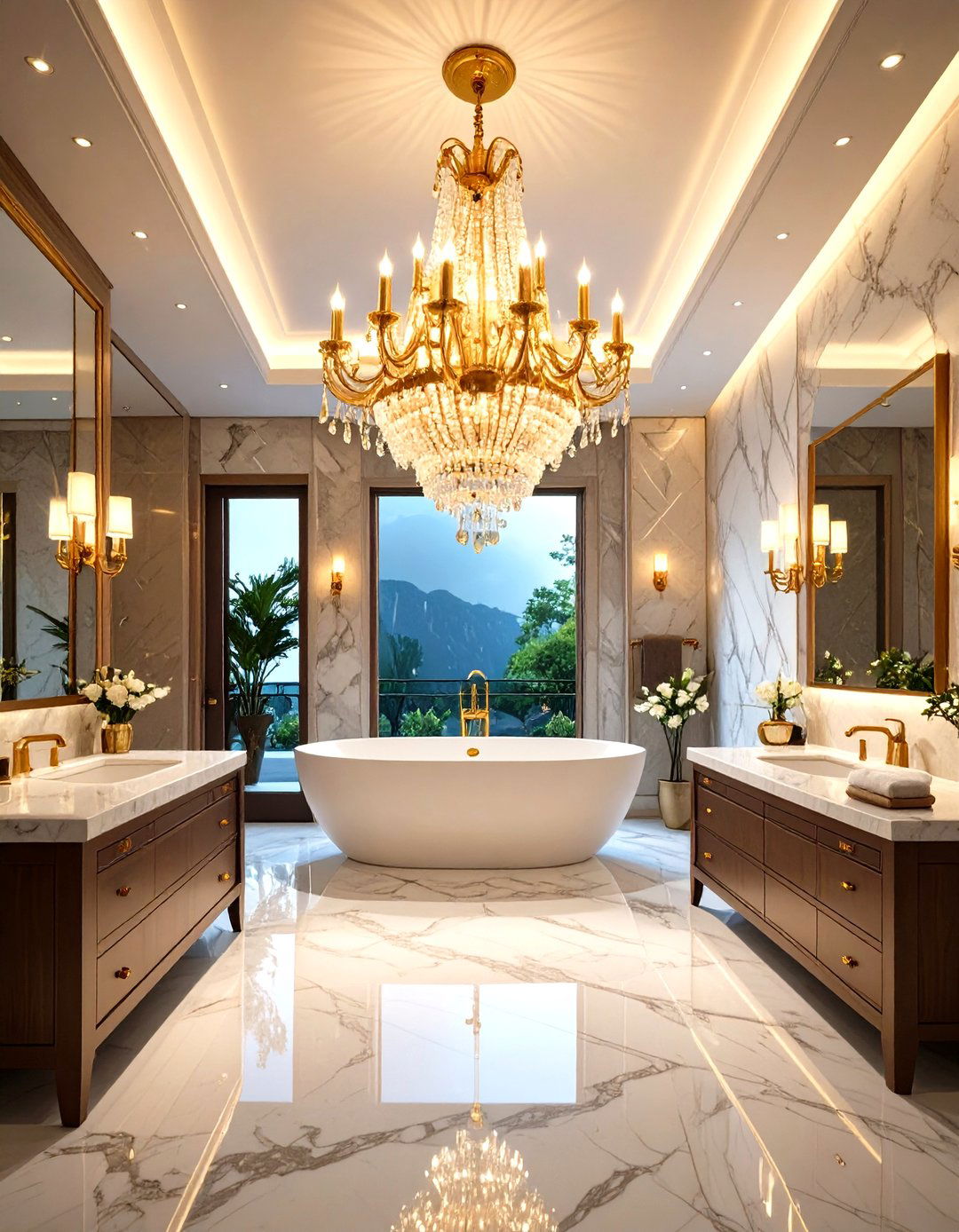
Elegant lighting creates the defining feature in this traditional bathroom centered around a stunning crystal or brass chandelier that transforms the space into a luxurious retreat. The chandelier's sparkling presence elevates everyday routines while providing beautiful ambient lighting. Traditional elements include marble surfaces, furniture-style vanities, and classic fixtures that complement the elegant lighting. The chandelier's scale must balance with room proportions, creating drama without overwhelming the space. Traditional materials including marble floors, subway tiles, and quality millwork provide appropriate backdrops for the elegant lighting fixture. Multiple lighting layers include the chandelier for ambiance, sconces for task lighting, and natural light through traditional windows. Traditional color palettes in whites, creams, and soft pastels enhance the chandelier's brilliance. This approach creates bathrooms that feel like elegant dressing rooms, celebrating traditional luxury while providing modern comfort through exceptional design that honors both beauty and functionality.
Conclusion:
Traditional bathroom design endures through its celebration of quality materials, timeless proportions, and expert craftsmanship. These twenty approaches demonstrate how classic elements—from Victorian grandeur to Arts and Crafts simplicity—create spaces that feel both historically grounded and contemporarily relevant. Whether incorporating marble surfaces, brass fixtures, or furniture-style cabinetry, traditional bathrooms succeed by balancing beauty with functionality while honoring design principles that have pleased homeowners for generations. The key lies in selecting authentic materials, maintaining proper proportions, and ensuring every element contributes to a cohesive vision that will remain beautiful for decades to come.


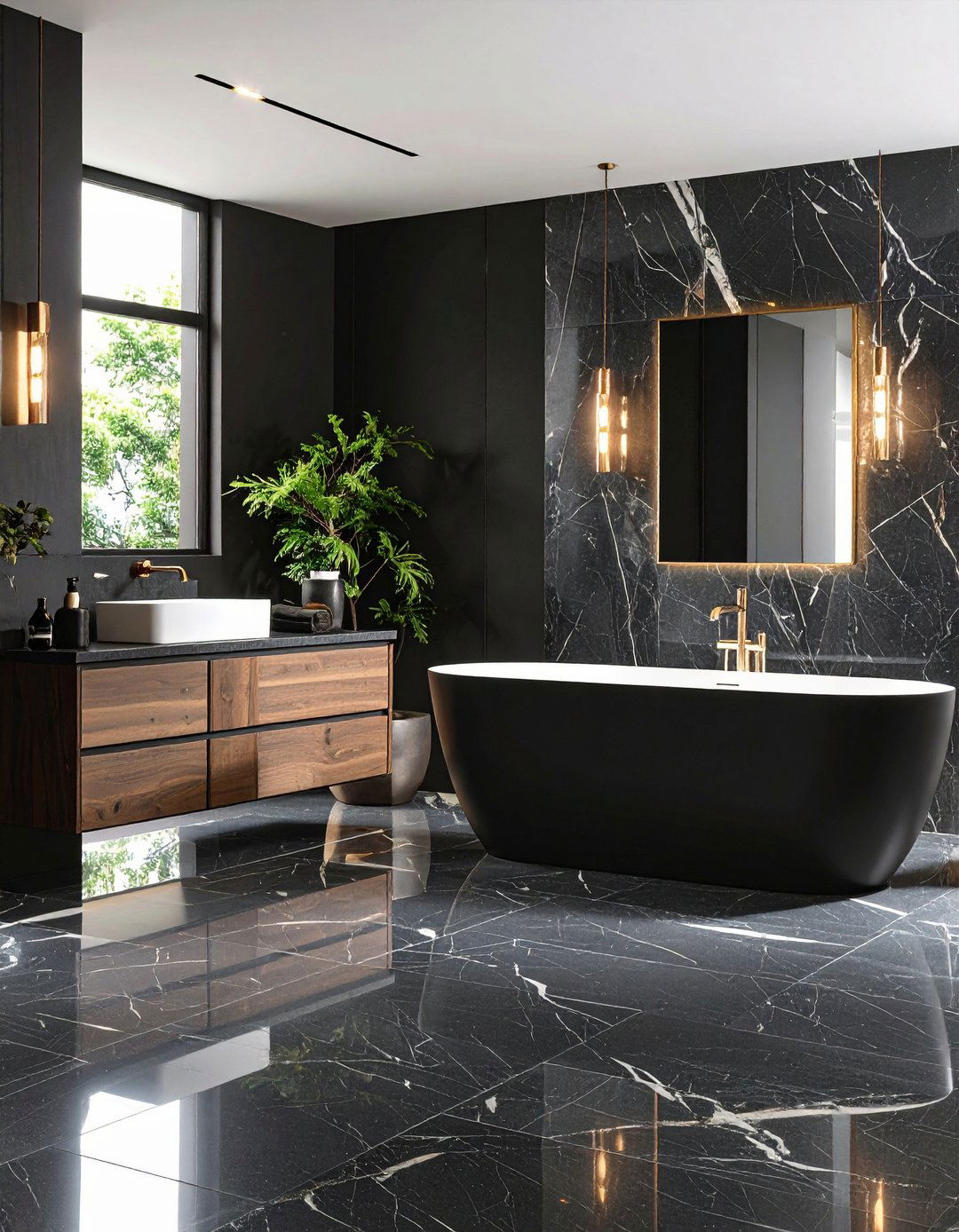
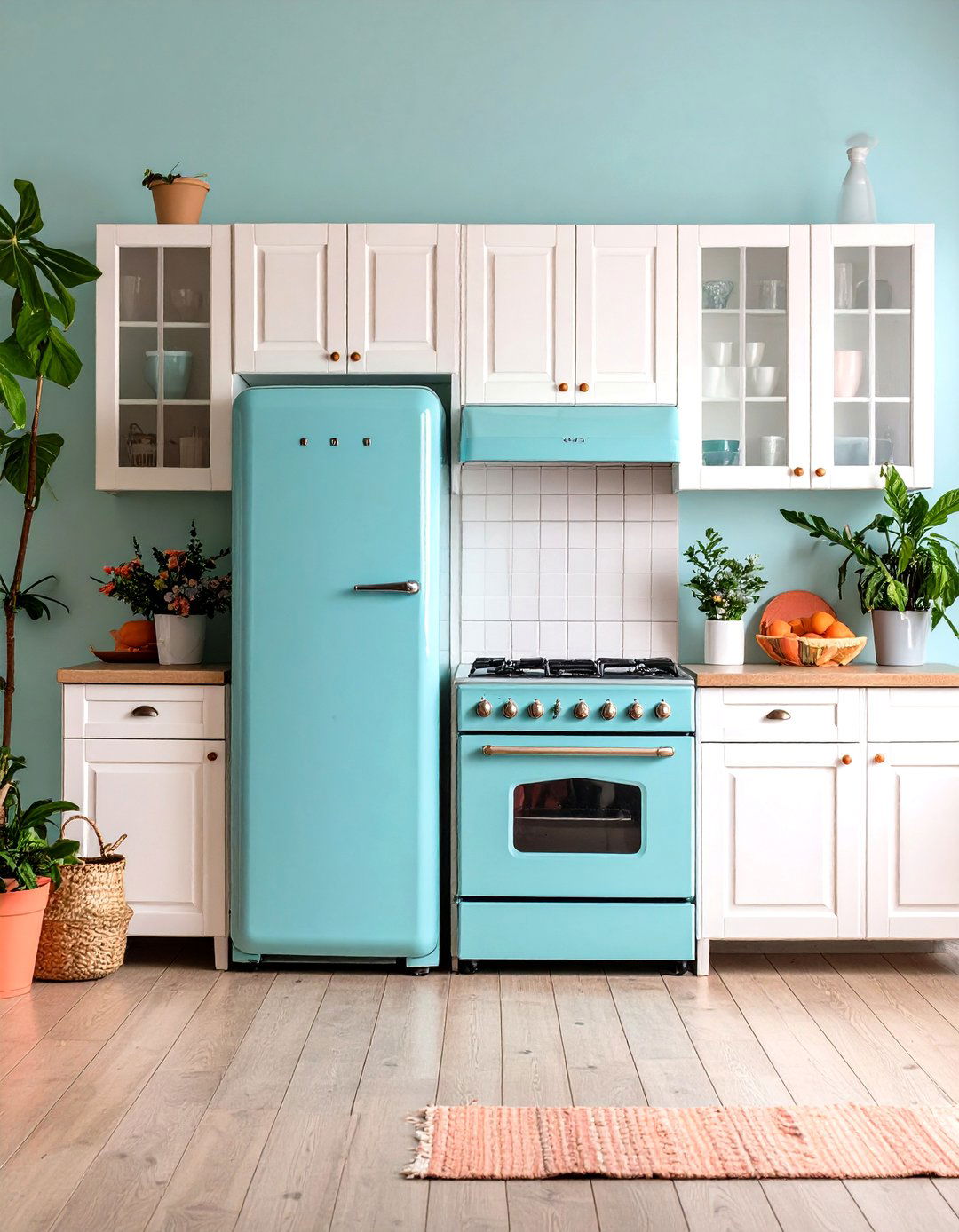
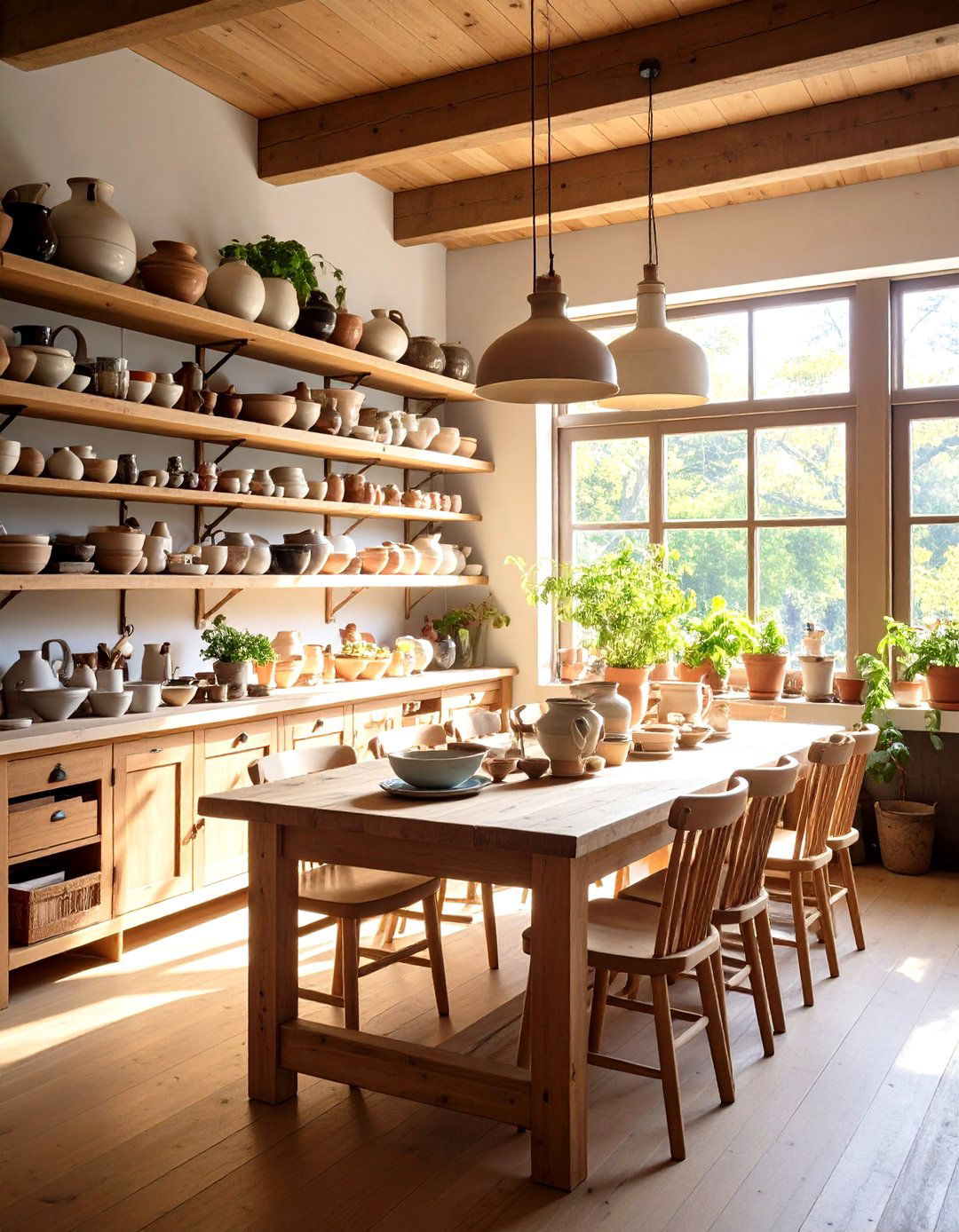

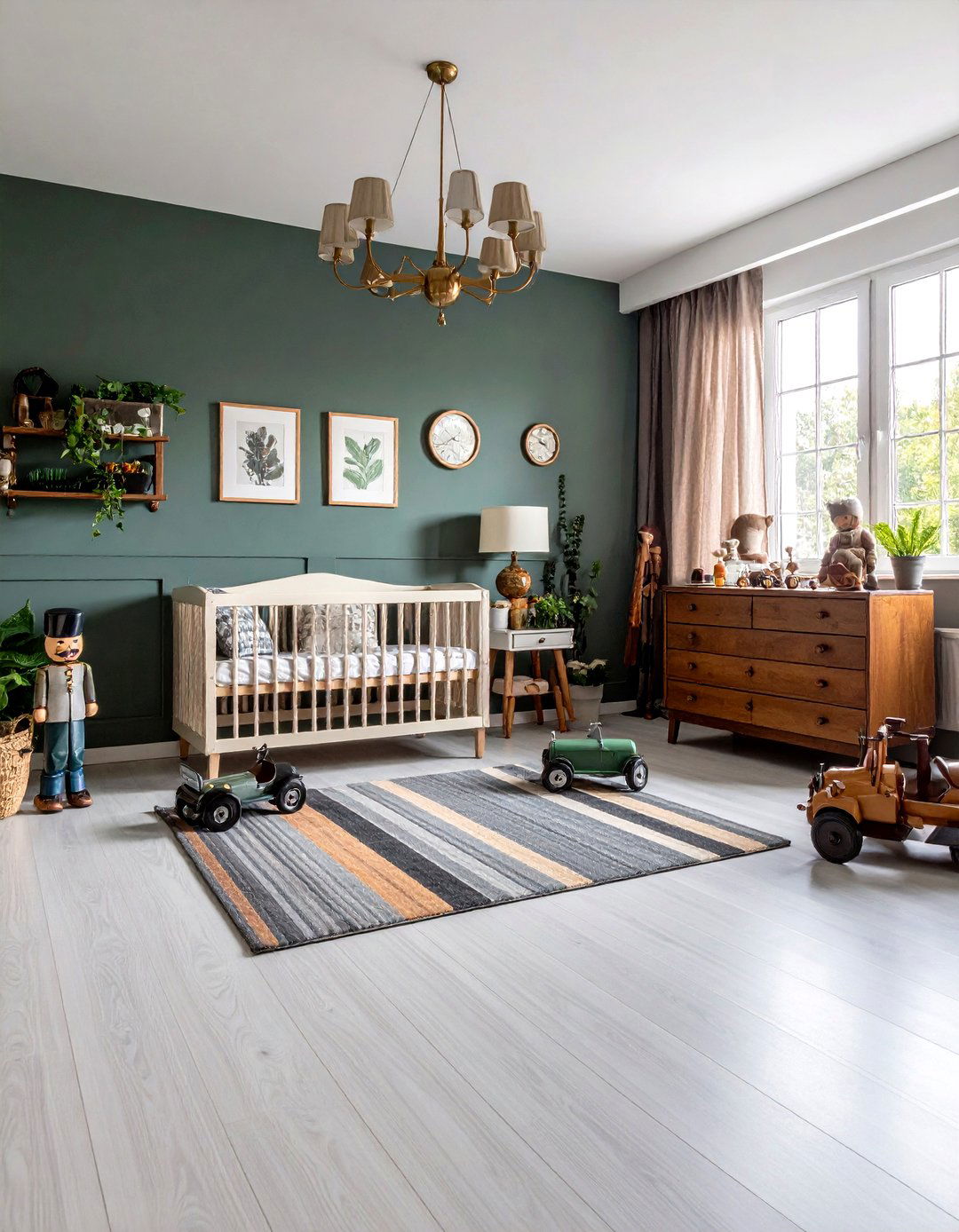
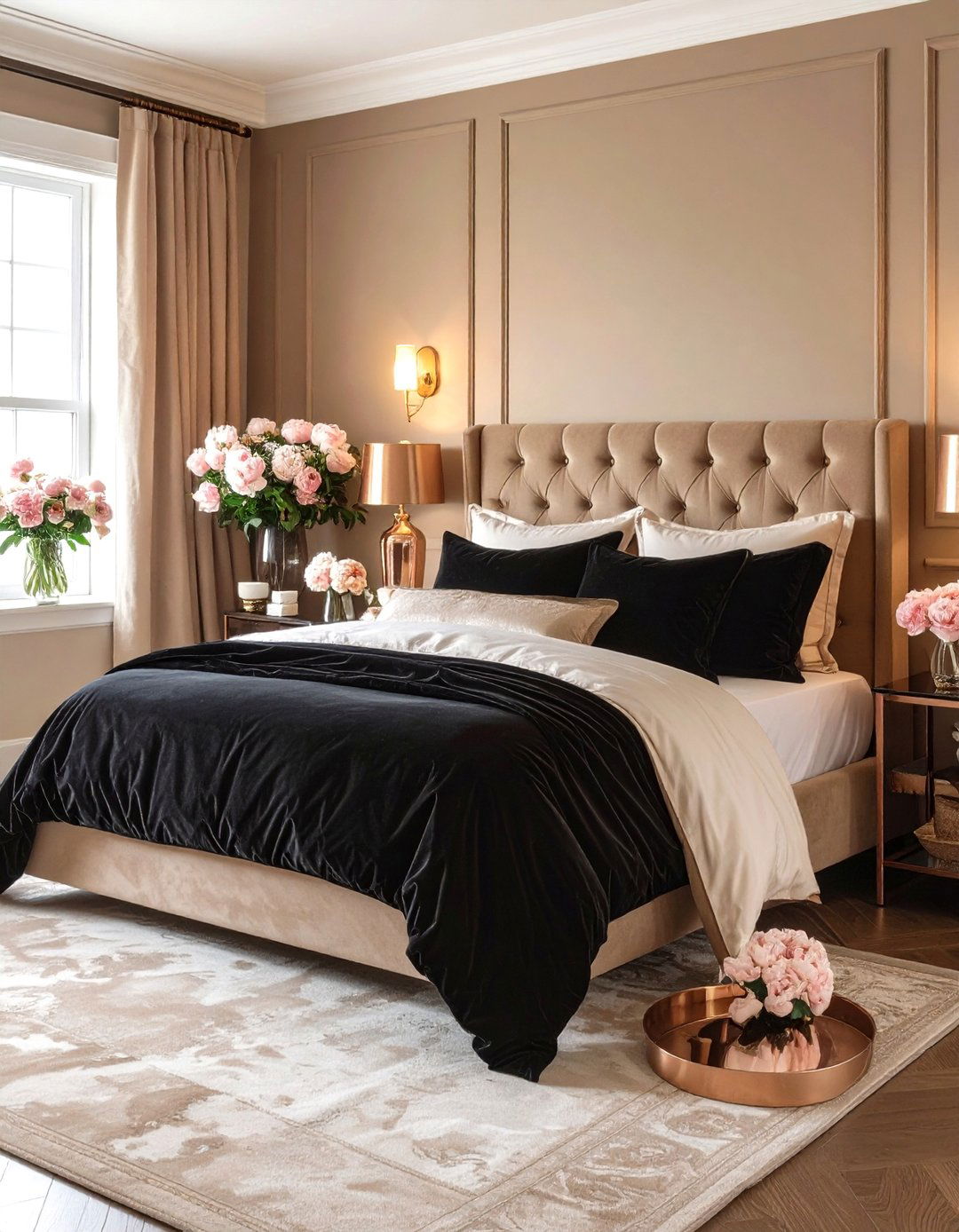
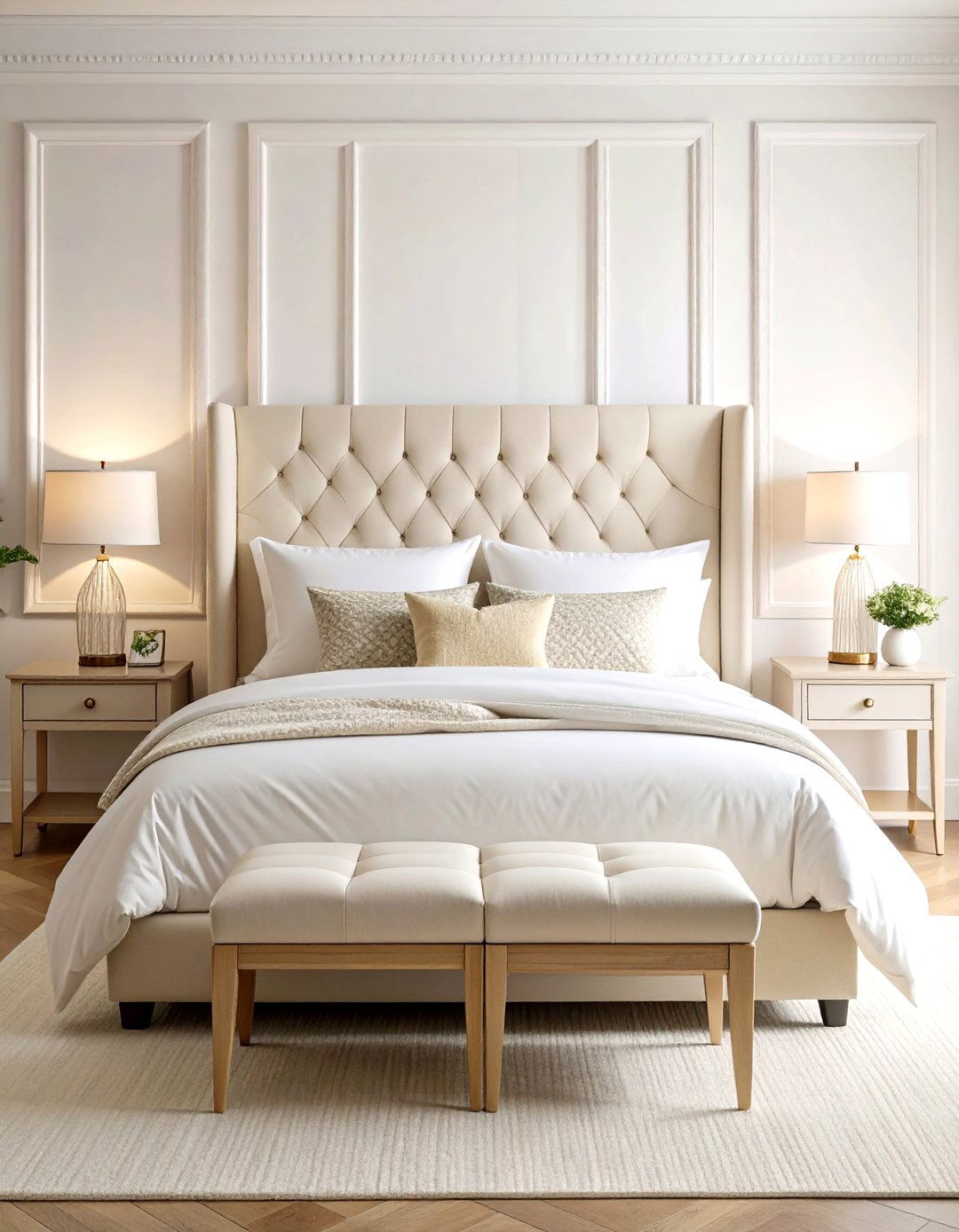
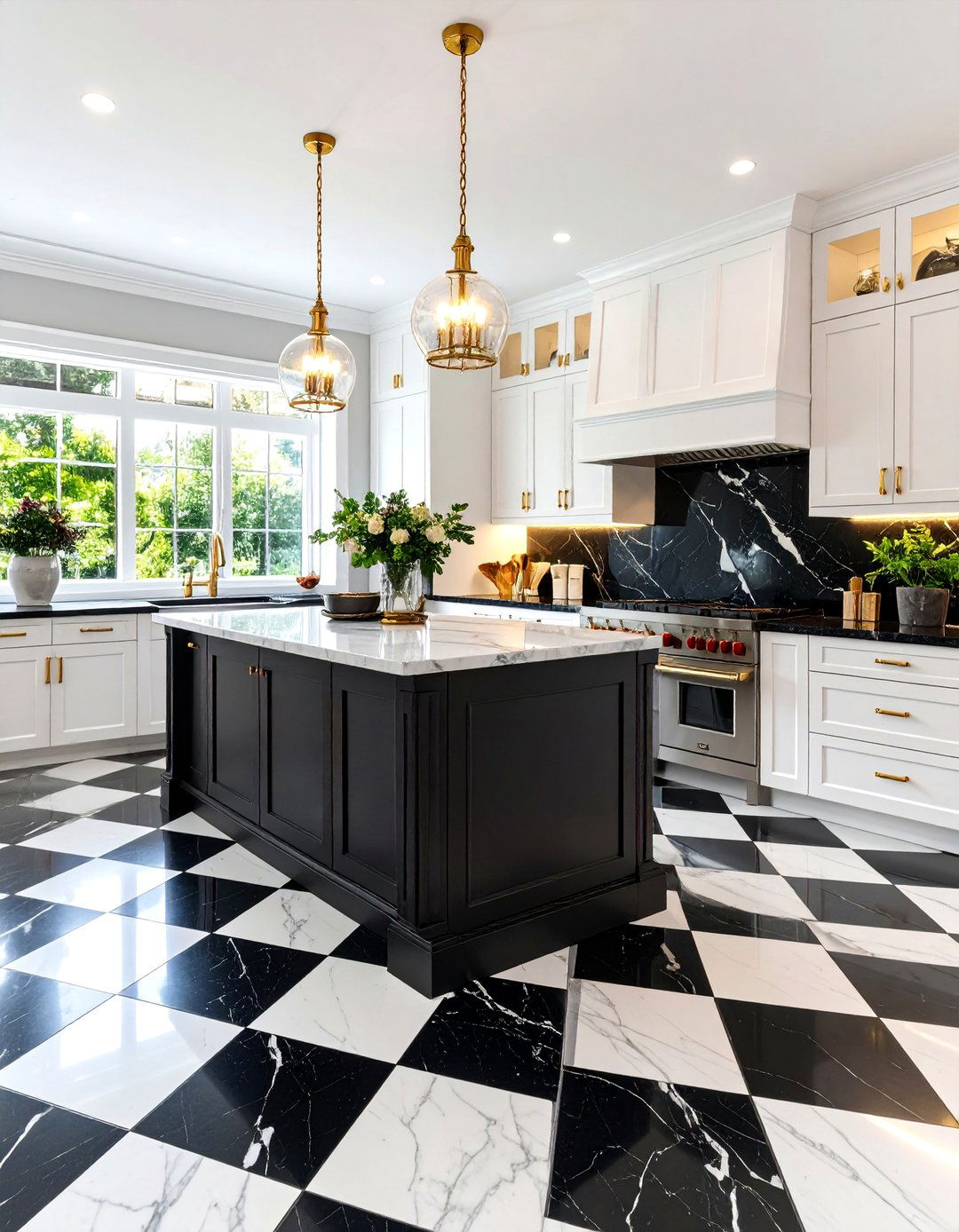


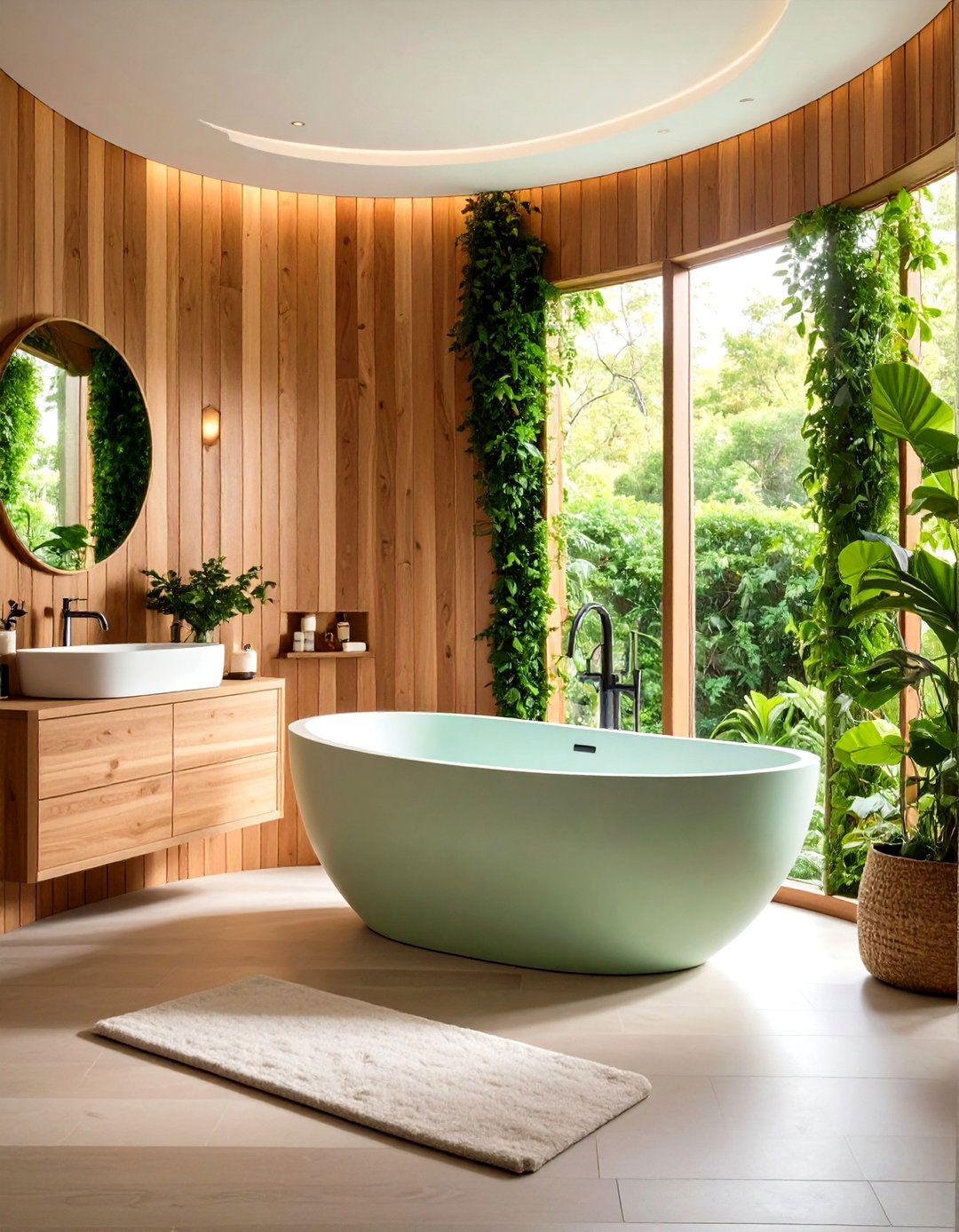
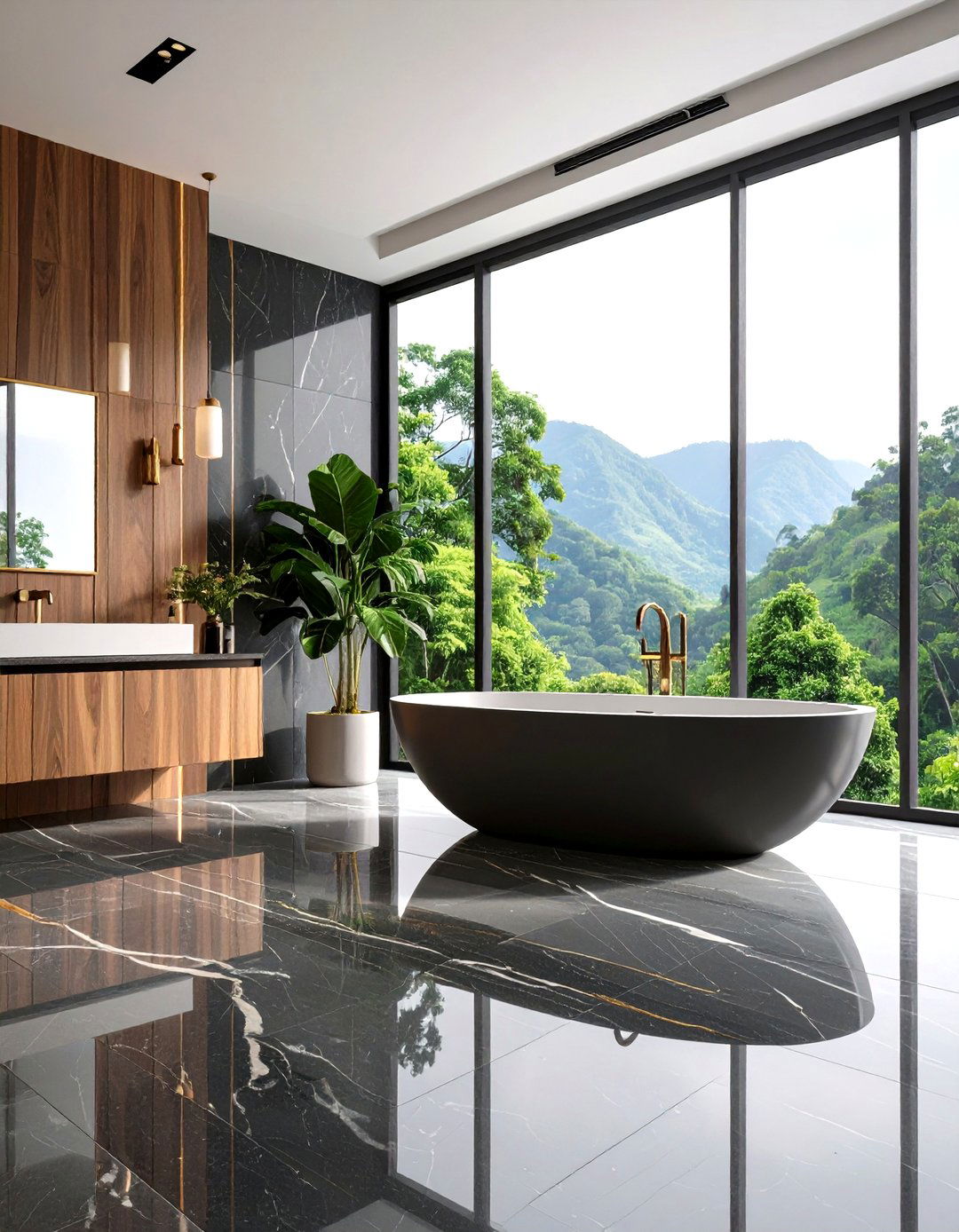

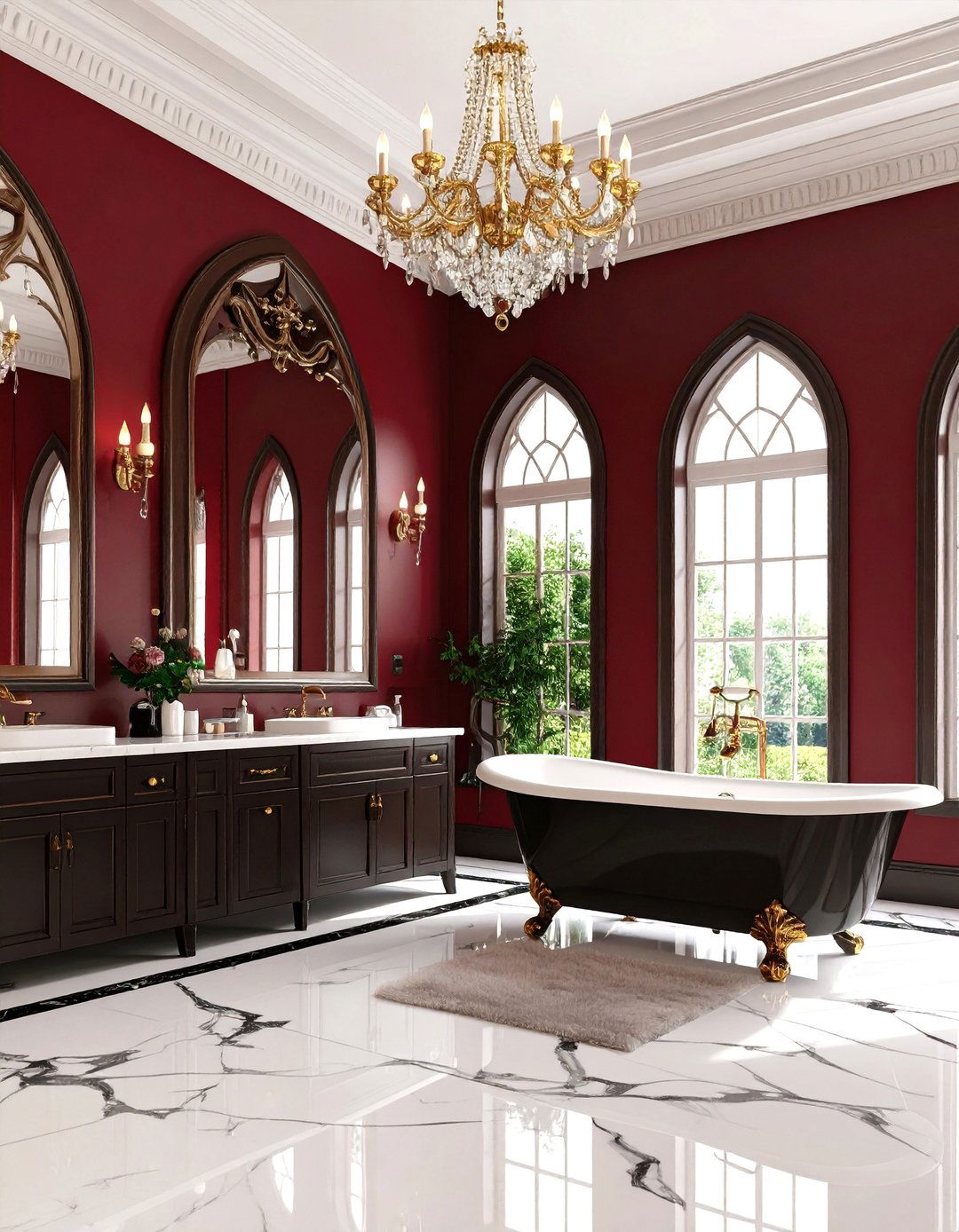
Leave a Reply